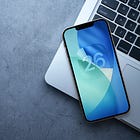iPhone Fold: Thinner Than Air and Redefining Form
Apple’s Bold Leap Into Next-Gen Foldable Design and Ultra-Thin Innovation
Just as the industry absorbs the impact of the ultra-slim iPhone Air, a new wave of rumors suggests Apple is preparing to push the boundaries of design even further. The long-anticipated foldable iPhone, tentatively dubbed the “iPhone Fold,” is poised to not only enter a new product category for Apple but to do so by setting a new standard for thinness—one that could make even the razor-thin iPhone Air seem substantial.
Scheduled for a potential 2026 debut, the iPhone Fold represents Apple’s patient yet deliberate entry into the foldable market. Rather than rushing to compete, the company appears to be engineering a device that solves the common complaints leveled against existing foldables, namely their bulk and thickness. Early reports indicate an obsessive focus on creating a device that is impossibly thin when open and comfortably familiar when closed.
Upgrade to Premium and enjoy exclusive articles, expert opinions, and insider tips.
An Engineering Marvel: The Metrics of Thin
The most striking rumor, originating from respected analyst Ming-Chi Kuo, centers on the iPhone Fold’s dimensions. When unfolded, the device is projected to measure between 4.5mm and 4.8mm thick. To put that into perspective, the recently launched iPhone Air, celebrated for its svelte profile, measures 5.64mm. This means the iPhone Fold could be a full millimeter—or roughly 20%—thinner than the thinnest iPhone ever made.
When folded, the device is expected to be between 9mm and 9.5mm. This is a critical detail. For comparison, the current iPhone 17 Pro comes in at 8.75mm. This suggests that when the iPhone Fold is closed and in your pocket, it will feel remarkably similar in thickness to a standard flagship iPhone. This would be a monumental engineering achievement, effectively delivering a large, tablet-like display in a form factor that doesn’t feel like a compromise in portability.
Apple’s strategy seems clear: to offer the expansive benefit of a foldable screen without the associated bulk. Users would get a device that feels as thin as an iPad when open, yet carries like a traditional iPhone when closed.
Redefining the Foldable Experience
Apple’s late entry into the foldable market gives it the advantage of learning from the competition’s shortcomings. Early foldables were often criticized for their noticeable display creases, fragile hinges, and cumbersome software experiences. Apple is expected to address these issues head-on.
Rumors point to significant investment in hinge technology and a crease-free display, ensuring the screen feels like a single, uninterrupted pane of glass. The user experience is paramount. iOS will undoubtedly be reimagined to take full advantage of the larger, flexible canvas. We can anticipate powerful multitasking capabilities that go beyond what is currently possible on an iPhone, perhaps borrowing elements from iPadOS to create a hybrid interface that adapts seamlessly as the device is opened and closed.
The iPhone Fold isn’t just about a bigger screen; it’s about a more versatile one. Imagine unfolding your device to review a document with a full-page view, edit a video on a larger timeline, or enjoy a truly immersive movie-watching experience. When you’re done, you can fold it shut and slip it back into your pocket with the ease of a standard smartphone.
The Impact on the Smartphone Market
Apple’s entrance is set to legitimize and ignite the foldable category. While other manufacturers have pioneered the technology, Apple’s participation often signals that a product category has reached maturity. The iPhone Fold’s focus on a “no-compromise” design—thin, light, and durable—will set a new high bar for the entire industry.
Competitors will be forced to respond, likely accelerating innovation in hinge design, screen technology, and material science across the board. The iPhone Fold has the potential to shift consumer expectations, transforming foldables from a niche, early-adopter product into a mainstream flagship category.
For users, this means more choice and better products. The iPhone Fold will represent a new tier at the top of Apple’s lineup, offering a glimpse into the future of personal computing. It merges the portability of an iPhone with the productivity of a mini-tablet, creating a device that could consolidate the need for multiple gadgets.
Are You Ready to Fold?
The iPhone Fold is shaping up to be one of the most radical redesigns in the product’s history. By prioritizing an impossibly thin form factor, Apple is not just building a foldable phone; it’s crafting a statement about the future of device engineering. The goal is to make the technology disappear, leaving only a seamless, versatile, and powerful experience.
While we are still a year away from its expected launch, the vision is compelling. The iPhone Fold promises the best of both worlds: a pocket-friendly device that transforms into an expansive canvas. It challenges the very definition of a smartphone, and if the rumors hold true, it will be an incredible feat of design that was well worth the wait.
Enjoyed this post? Share your thoughts in the comments!
Like, Restack, and Share to spread Apple Secrets!




